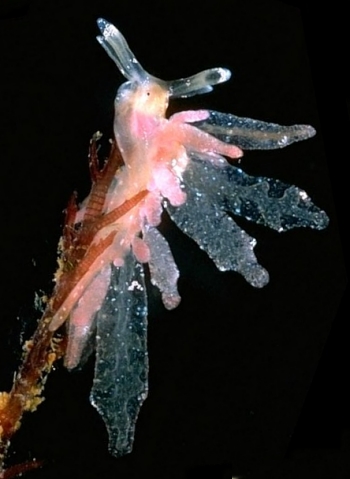
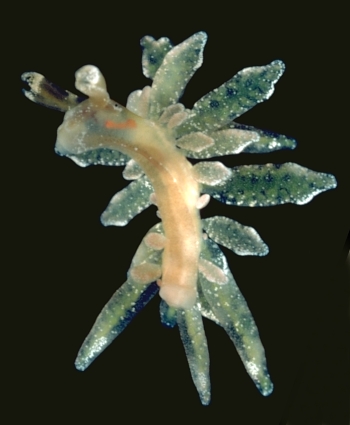
Hermaea evelinemarcusae
Jensen, 1993
Order: SACOGLOSSA
Superfamily: LIMAPONTIOIDEA
Family: Hermaeidae
DISTRIBUTION
Apparently widespread in temperate Australia, with records from sthn Western Australia, Victoria, Tasmania.
PHOTO
Upper: Rocky Cape, NW Tasmania, Australia, 4 m, 14 Oct 1984. AM C143617. Lower: Breakwater, Stanley, NW Tasmania, 6 Jan 1985. AM C144526. [lengths to follow] Photos: Bill Rudman.
Little is known about this species apart from its original description, based on 3 specimens from Western Australia. The animal is almost transparent, with the body organs showing through the skin. Fine red specks are scattered over the skin and slightly larger white glandular dots are also present. Sometimes the white can form larger clusters as on the rhinophore tips and and on the cerata. The animals usually have an overall pinkish tint which is accentuated when the branched digestive gland in the cerata is full of recently ingested cell contents from the red algae thay feed on. The body is quite slender and the cerata are arranged in two or more rows down each side [not one as in original description], and the cerata range in size from quite small to very large. In my experience, cerata are autotomised very easily, which could explain the differing accounts of ceratal arangement.
Jensen reports it feeding on a species of the red algae Griffithsia and describes the feeding process as: "[The algae has] cells that are often larger than the head of the animal. The emptied cell is completely deflated. When the animals are sucking, the cerata pulsate vigorously. The radula only 'rasps' for a few seconds, then very rapid sucking occurs..."
-
Jensen, K.R. (1993) Sacoglossa (Mollusca, Opisthobranchia) from Rottnest Island and central Western Australia. In: Proceedings of the 5th International marine Biological Workshop: The marine Flora and Fauna of Rottnest Island, Western Australia. (Eds: Wells, F.E; Walker, D.I.; Kirkman, H; Lethbridge, R) Western Australian Museum, Perth, 207-253.
Rudman, W.B., 2006 (July 14) Hermaea evelinemarcusae Jensen, 1993. [In] Sea Slug Forum. Australian Museum, Sydney. Available from http://www.seaslugforum.net/find/hermevel
Related messages
Hermaea from Victoria, Australia
July 15, 2006
From: Trevor McMurrich
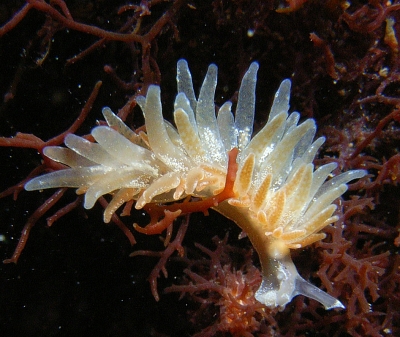
Hi Bill,
I found this nudi on a small man made reef next to the shore. Could you identify it please?
Locality: Indented Heads, 1 metre, Victoria, Port Phillip Bay, 20 Jume 2006, shallow reef. Length: 15 mm. Photographer: Trevor McMurrich.
Trevor McMurrich
trevm@aanet.com.au
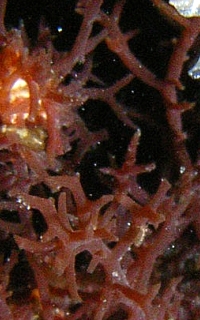
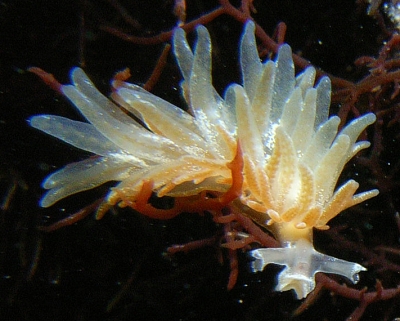
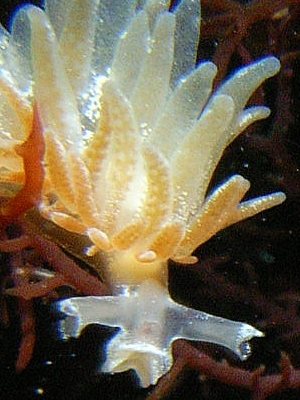
Dear Trevor,
Although it looks like a nudibranch, it is in fact a member of another sea slug group which we call the sacoglossans. They are all herbivores and feed by sucking the cell contents from particular algae. Most species of Hermaea feed on red algae and have a pinkish colouration. I have included a close-up showing the red algae you found the animal on. I am pretty sure your animal is Hermaea evelinemarcusae, but I have a few doubts. Your animal seems to have many more cerata than usual for the species, and they seem arranged in a very regular pattern. Species of Hermaea often discard cerata, much like a lizard drops its tail, when attacked, so it could be that this animal has led a charmed life and has not needed to discard any of its cerata.
The darker branching in the cerata, which you can see in the close-up alongside, are the branching ducts of the digestive gland, where food is digested and absorbed.
Best wishes,
Bill Rudman
